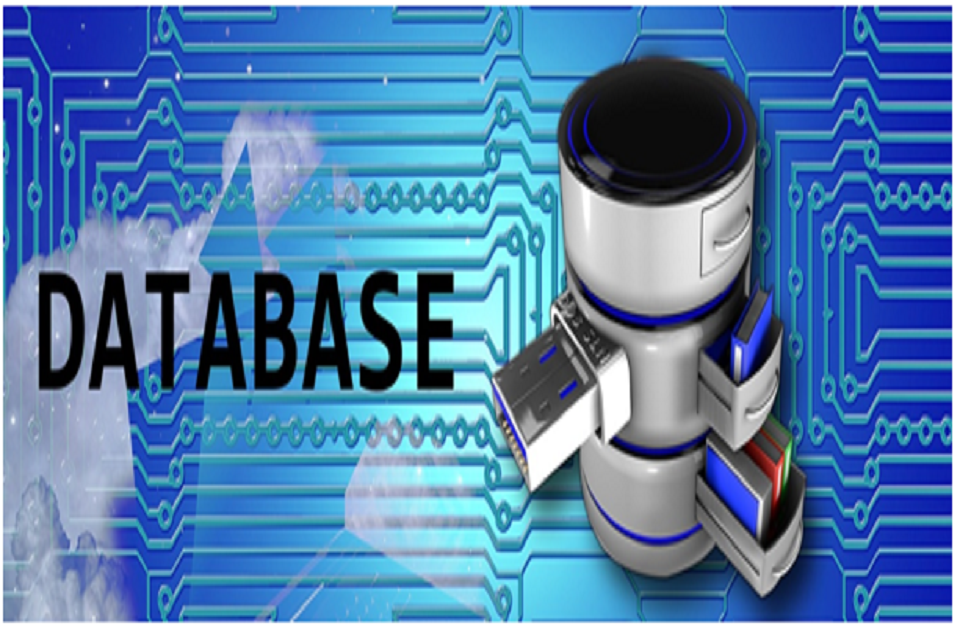What are Sequel Programming Languages and Why are They Important for Managing and Analyzing Data?

Introduction
What are Sequel Programming Languages? Structured Query Language (SQL) is a programming language used to manage and manipulate relational databases. SQL is a standard language that is widely used in the industry for tasks such as creating and modifying database schemas, inserting, updating, and deleting data, and querying data to extract useful information. SQL is used by database administrators, data analysts, and software developers to manage and interact with databases. This blog post will cover the important aspects of SQL, including basic syntax and structure, querying and modifying data, advanced SQL concepts, best practices, and the future of SQL. Understanding these key aspects of SQL is essential for anyone who works with databases and wants to improve their data management and analysis skills.
Important aspects of Sequel Programming Languages
Basic syntax and structure of SQL
In order to effectively use SQL to manage and manipulate relational databases, it is crucial to have a strong understanding of its basic syntax and structure. SQL follows a set of rules that govern how statements are written and executed. The main aspect of what are Sequel Programming Languages is requires understanding the syntax involves knowing the different components of an SQL statement, including keywords, clauses, and operators, and how they fit together to form a complete statement.
Creating tables is a fundamental aspect of SQL and involves defining the structure of the data that will be stored in the database. Tables are created with a specific schema, which includes columns with specific data types and constraints that ensure data integrity.
Inserting data allows you to add new records to a table, which is the primary way of populating a database with information. Basic queries involve retrieving data from one or more tables using the SELECT statement, which can be filtered and sorted using various clauses such as WHERE and ORDER BY.
By mastering the basic syntax and structure of SQL, you can build a strong foundation for more advanced concepts and techniques in database management and analysis.
Relational databases:
Relational databases are a fundamental component of modern data management, and SQL is the primary language used for managing these databases. A relational database is a collection of tables that store data in a structured way, with each table containing rows and columns that correspond to specific data entities and attributes. The relationship between tables is established through keys, which are used to link related data across tables.
Understanding what are Sequel Programming Languages requires mastering the basics of relational databases is essential for using SQL effectively. This includes understanding concepts such as table design, normalization, and relationships between tables. Normalization is the process of organizing data in a way that minimizes redundancy and improves data integrity, which is critical for efficient data management. Relationships between tables are also important to understand, as they allow you to retrieve and manipulate data across multiple tables using SQL.
Relational databases are used in a wide range of applications, including web development, business intelligence, and data analytics. By mastering SQL and relational database concepts, you can develop skills that are in high demand in many industries and become a valuable asset to any organization.
Data types and constraints
In SQL, data types define the type of data that can be stored in a table column. Common data types include integers, text, dates, and decimal numbers. It’s important to choose the appropriate data type for each column to ensure that data is stored efficiently and accurately.
Constraints, on the other hand, are rules that are enforced on the data in a table. SQL supports a variety of constraints, such as unique, not null, primary key, and foreign key. A unique constraint ensures that each value in a column is unique, while a not null constraint ensures that a column cannot contain null values. Primary key constraints are used to uniquely identify each row in a table, and foreign key constraints enforce referential integrity between related tables.
Understanding data types and constraints is essential for effective database design and management. By using the appropriate data types and constraints, you can ensure that your data is accurate, consistent, and easy to work with thus helping you understand what are Sequel Programming Languages.
Querying data
Querying data is one of the most important tasks that can be accomplished with SQL. SQL provides a range of statements for querying data from tables and retrieving specific information based on certain conditions. The most common SQL statement for retrieving data is the SELECT statement, which allows you to specify the columns you want to retrieve data from and the tables you want to retrieve data from. You can also filter data using the WHERE clause, which allows you to select only the rows that meet certain conditions. JOIN is another key SQL statement that allows you to combine data from multiple tables into a single result set.
With SQL, you can perform complex queries to extract useful information from databases, such as generating reports, performing data analysis, and finding patterns in data. The ability to query data using SQL is a valuable skill for any data analyst or database administrator.
Modifying data
Modifying data is another crucial aspect of using SQL to manage and manipulate relational databases. SQL provides a range of statements for modifying data, including UPDATE, DELETE, and INSERT. The UPDATE statement allows you to modify existing records in a table, while the DELETE statement is used to remove records from a table. INSERT is used to add new records to a table.
When modifying data using SQL, it is important to use caution and ensure that you are modifying or deleting only the data that you intend to. It is also important to understand the impact that these modifications can have on related data and to use constraints and triggers to enforce data integrity.
The ability to modify data using SQL is essential for maintaining the accuracy and integrity of databases. It allows you to update or remove incorrect or outdated data, add new data as it becomes available, and manage data in a way that meets the needs of your organization. By mastering the skills needed to modify data using SQL, you can become a more effective data analyst or database administrator.
what are Sequel Programming Languages – Aggregating data
SQL provides a variety of functions that allow you to aggregate data and derive meaningful insights from it. Aggregating data involves combining multiple rows of data into a single result set, typically by performing calculations on the data in those rows. SQL supports a range of aggregation functions, including COUNT, SUM, AVG, MAX, and MIN. The COUNT function is used to count the number of rows in a table, while the SUM function calculates the sum of a specified column. The AVG function calculates the average value of a column, while the MAX and MIN functions return the highest and lowest values in a column, respectively.
By using these aggregation functions in SQL, you can perform complex calculations on large datasets and extract useful information from them. This can be useful when learning what are Sequel Programming Languages and it helps learn how to generate reports, analyzing trends, and identifying patterns in data. The ability to aggregate data using SQL is an important skill for anyone working with databases and data analysis.
Advanced SQL concepts
In addition to the basic SQL concepts mentioned earlier, there are several advanced concepts that can help you perform more complex operations on databases. One such concept is subqueries, which are queries that are embedded within other queries. Subqueries can be used to retrieve data that meets certain conditions or to perform calculations on a subset of data.
Views are another advanced SQL concept that allows you to create a virtual table based on the results of a SELECT statement. Views can simplify complex queries and allow you to work with only the data you need.
Stored procedures are a set of SQL statements that are stored and executed as a single unit. Stored procedures can be used to automate tasks, improve performance, and ensure data integrity.
Triggers are a type of stored procedure that are executed automatically in response to certain events, such as an insert, update, or delete operation. Triggers can be used to enforce business rules and ensure data consistency.
By mastering these advanced SQL concepts, you can become a more efficient and effective database administrator or data analyst.
Database management systems
Database management systems (DBMS) are software applications that allow users to create, manage, and manipulate databases. SQL is a language that is supported by various DBMSs, including MySQL, Oracle, PostgreSQL, and Microsoft SQL Server. Each of these systems has its own strengths and weaknesses, and understanding their differences is crucial for effectively working with SQL.
For instance, MySQL is known for its ease of use and scalability, while Oracle is known for its robustness and advanced features. PostgreSQL is highly customizable and has strong support for complex queries, while Microsoft SQL Server is widely used in enterprise environments and integrates well with other Microsoft products.
Understandingwhat are Sequel Programming Languages also requires learning the differences between these DBMSs and how to use them can help you choose the right system for your needs and optimize your use of SQL. Additionally, having knowledge of multiple DBMSs can make you a more versatile and valuable database professional.
Best practices
There are several best practices that can help you learn what are Sequel Programming Languages thus hep write efficient, maintainable, and secure SQL code:
• Use clear and concise naming conventions for tables, columns, and other database objects to make your code more readable and understandable.
• Avoid using SELECT * statements, which can cause unnecessary network traffic and slow down query performance. Instead, specify only the columns you need.
• Use indexes to improve query performance and ensure that data is retrieved quickly.
• Use parameterized queries to prevent SQL injection attacks, which can compromise the security of your database.
• Optimize your database schema and use normalization techniques to reduce data duplication and improve data consistency.
• Test your SQL code thoroughly to identify and fix errors before deploying it to production.
Future of SQL
The future of SQL looks bright, as it continues to evolve and adapt to changing technologies and trends. One major trend is the rise of cloud-based databases, which are becoming increasingly popular due to their scalability, cost-effectiveness, and flexibility. Cloud-based databases often use SQL, but also incorporate other technologies such as NoSQL and machine learning.
Another trend is the use of SQL in big data and data science applications. As the amount of data that organizations collect continues to grow, SQL is being used to query and analyze massive datasets, often in real-time. This has led to the development of new SQL-based tools and technologies, such as Apache Spark and Presto.
Finally, the use of SQL in mobile and web applications is becoming more prevalent, as developers seek to integrate database functionality directly into their applications. This has led to the development of new SQL-based tools and frameworks, such as SQLite and Hibernate.
Overall, the future of SQL looks bright, as it continues to be an important tool for managing and analyzing data in a variety of applications and industries.
FAQs
1. what are Sequel Programming Languagesand why is it important?
SQL stands for Structured Query Language, and it is a programming language that is used to manage and manipulate data in relational databases. SQL is important because it allows users to store, retrieve, and modify data in an efficient and organized manner.
2. some basic what are Sequel Programming Languages and concepts that beginners should know?
Beginners should understand the basic syntax and structure of SQL, including how to create tables, insert data, and perform basic queries. They should also be familiar with data types and constraints, and understand how to modify data using statements such as UPDATE, DELETE, and INSERT.
3. What are some advanced SQL concepts that experienced users should know?
Experienced users should be familiar with more advanced SQL concepts such as subqueries, views, stored procedures, and triggers. These concepts allow users to perform more complex operations on databases and automate common tasks.
4. What are some best practices for using SQL?
Best practices for using SQL include using clear and concise naming conventions, avoiding SELECT * statements, using indexes to improve performance, and testing SQL code thoroughly. Additionally, users should optimize their database schema and use normalization techniques to reduce data duplication and improve data consistency.
5. What is the future of SQL?
The future of SQL looks bright, as it continues to adapt to new technologies and trends. Cloud-based databases, big data and data science applications, and mobile and web applications are all areas where SQL is being used and developed further. As data continues to play a more important role in business and society, SQL will likely continue to be an important tool for managing and analysing data thus making it important to know what are Sequel Programming Languages require.
Total Assignment Help
Incase, you are looking for an opportunity to work from home and earn big money. TotalAssignmenthelp Affiliate program is the best choice for you.
Do visit :https://www.totalassignment.com/affiliate-program for more details
Total Assignment help is an assignment help Online service available in 9 countries. Our local operations span across Australia, US, UK, South east Asia and the Middle East. With extensive experience in academic writing, Total assignment help has a strong track record delivering quality writing at a nominal price that meet the unique needs of students in our local markets.
We have specialized network of highly trained writers, who can provide best possible assignment help solution for all your needs. Next time you are looking for assignment help, make sure to give us a try.
Looking for Assignment Help from Top Experts ?
Get the best Assignment Help from leading experts from the field of academics with assured onetime, 100% plagiarism free and top Quality delivery.


